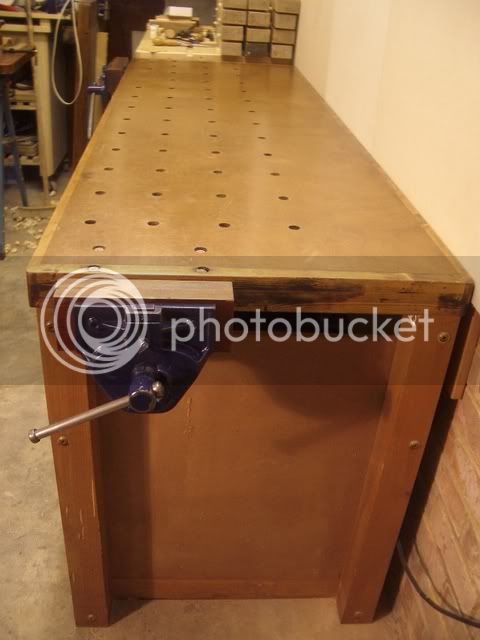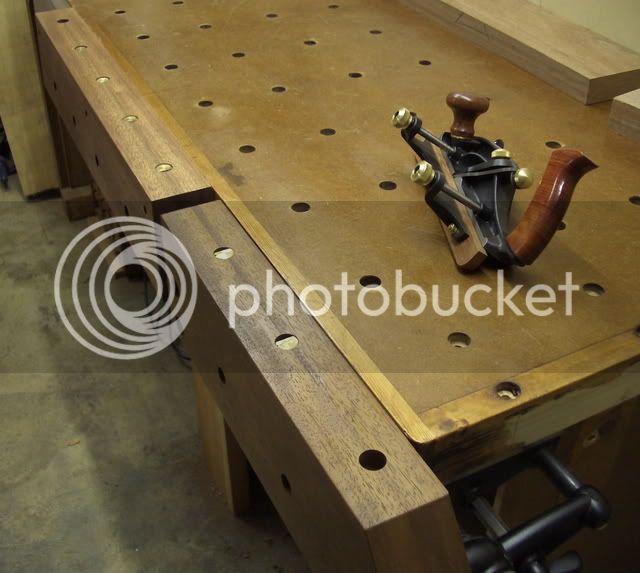I am about to embark on a bench build, using the Scwarz English workbench as a guide. I am pretty happy with my plans so far but I am thinking about the bench top itself. I am aiming for a thickness of IRO 65mm to make optimal use of holdfasts, but have probably =/- 10mm where they will still work well.
As a base, I have a 44mm thick solid core firedoor. Dense, flat and cheap. My plan is to add a layer of something to this. Would 18mm ply, mdf or the green chipboard flooring be most suited? How is one fixed to the other to maintain flatness? Am I right to be concerned that the board will be subjected to different conditions top and bottom which could induce warping, or should a solid bond to the firedoor prevent this?
Next, I was planning a sacraficial top layer. Would hardboard or thin ply be better for this? If hardboard, oli tempered, normal or white faced? I saw a thread from Derek Cohen where he commented on having a dark coloured bench as not being ideal (although to be fair if I could produce something half as good as he has on this bench I would be over the moon!). Again, how do I fix this so that it can be removed if required and has no metal in it that could damage edges?
What if any finish should be applied to this top?
Thanks
Mark
As a base, I have a 44mm thick solid core firedoor. Dense, flat and cheap. My plan is to add a layer of something to this. Would 18mm ply, mdf or the green chipboard flooring be most suited? How is one fixed to the other to maintain flatness? Am I right to be concerned that the board will be subjected to different conditions top and bottom which could induce warping, or should a solid bond to the firedoor prevent this?
Next, I was planning a sacraficial top layer. Would hardboard or thin ply be better for this? If hardboard, oli tempered, normal or white faced? I saw a thread from Derek Cohen where he commented on having a dark coloured bench as not being ideal (although to be fair if I could produce something half as good as he has on this bench I would be over the moon!). Again, how do I fix this so that it can be removed if required and has no metal in it that could damage edges?
What if any finish should be applied to this top?
Thanks
Mark


































